The recent trend of companies demanding that employees return to the office is causing waves of disruption across industries. After years of adapting to a fully remote or hybrid work environment, employees and leaders are once again facing a massive shift in workplace dynamics.
 Surprisingly, even large organizations that once embraced remote work and are known for their innovation, like Amazon and Zoom, are now starting to demand that employees return to the office. This shift has caught many by surprise, especially given how these companies led the way in adapting to a fully remote model during the pandemic. But as more businesses reconsider their long-term remote work strategies, many are struggling with the implications of returning to a more traditional office setting.
Surprisingly, even large organizations that once embraced remote work and are known for their innovation, like Amazon and Zoom, are now starting to demand that employees return to the office. This shift has caught many by surprise, especially given how these companies led the way in adapting to a fully remote model during the pandemic. But as more businesses reconsider their long-term remote work strategies, many are struggling with the implications of returning to a more traditional office setting.
Whether you’re a big, complex organization like Amazon, a tech company like Zoom, or a different business altogether, making such a drastic change in working conditions requires strategic change management to mitigate risks and ensure the intended results. A shift this significant can disrupt team dynamics, reduce morale, and create resistance—unless it’s managed with care and insight. Successful transitions require a thoughtful approach, one that combines both internal insights and external expertise.
This is where the concept of a hybrid team becomes essential. Internal team members, especially those in HR or front line management, bring a deep understanding of the organization’s culture and the employee pulse. They are crucial for gauging how this shift is being perceived internally and for shaping communications that resonate with employees. They can serve as the voice of the employee, helping leadership understand potential resistance or concerns that might otherwise go unnoticed.
On the other hand, external experts can offer a fresh, outsider perspective and proven change management strategies. With the experience of helping organizations navigate similar transitions, they bring best practices and an objective view of what works—and what doesn’t. External support is often critical for designing scalable solutions, addressing legal and logistical implications, and providing insights on managing resistance to change.
When managed by a hybrid team combining these internal and external strengths, the transition back to the office can become a smoother process. This team can create a roadmap that includes clear communication, employee engagement initiatives, and flexible policies that meet both organizational and employee needs. By anticipating challenges and planning for resistance, the hybrid team can help ensure that the shift back to in-person work is not just a mandate but a well-supported, thoughtful change that aligns with the organization’s goals and its employees’ expectations.
The key takeaway here is that managing such a significant change requires more than just a top-down decision. It requires the right team—a hybrid of internal knowledge and external expertise—to lead the organization through the turbulence and land on the other side stronger and more cohesive.




